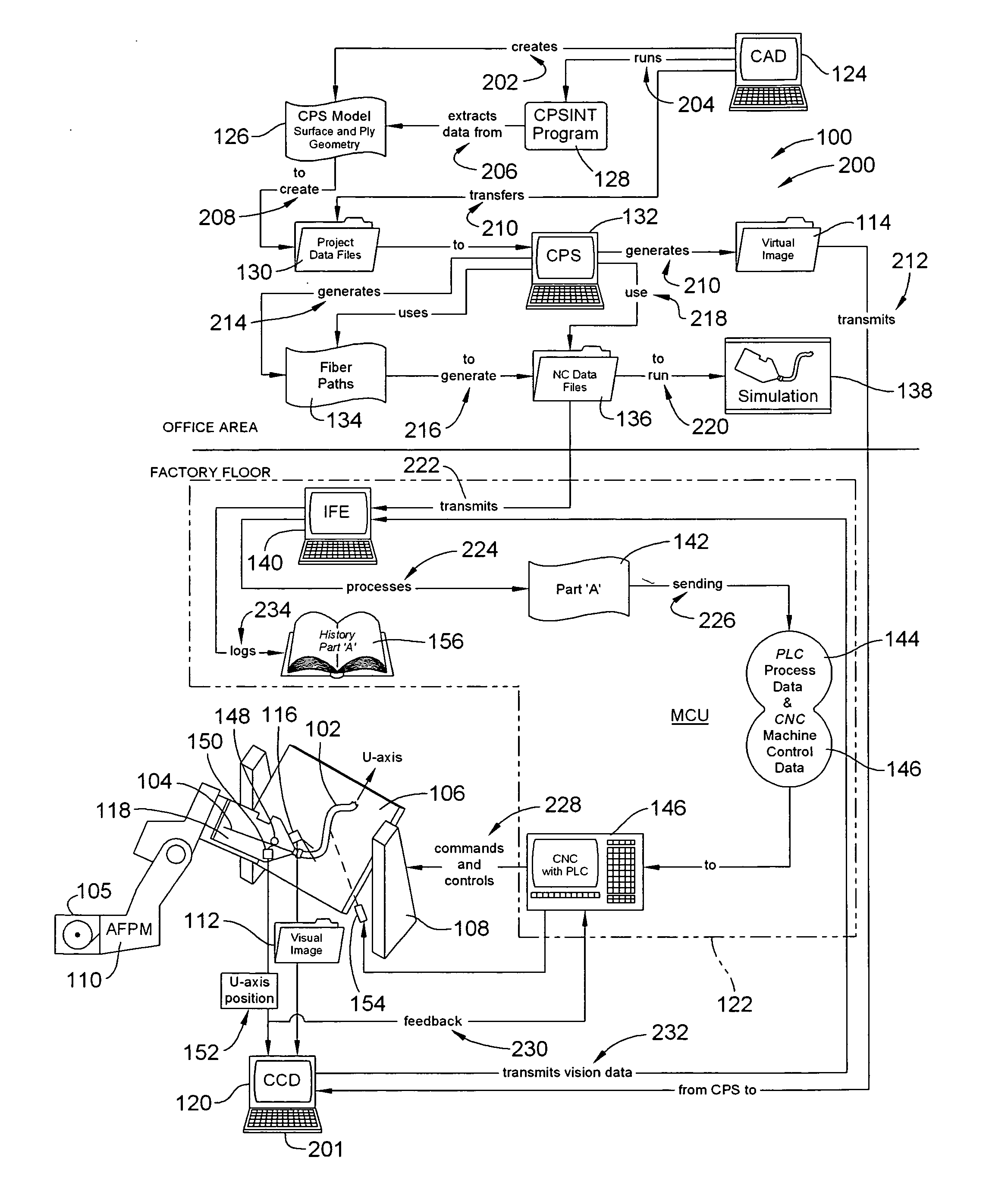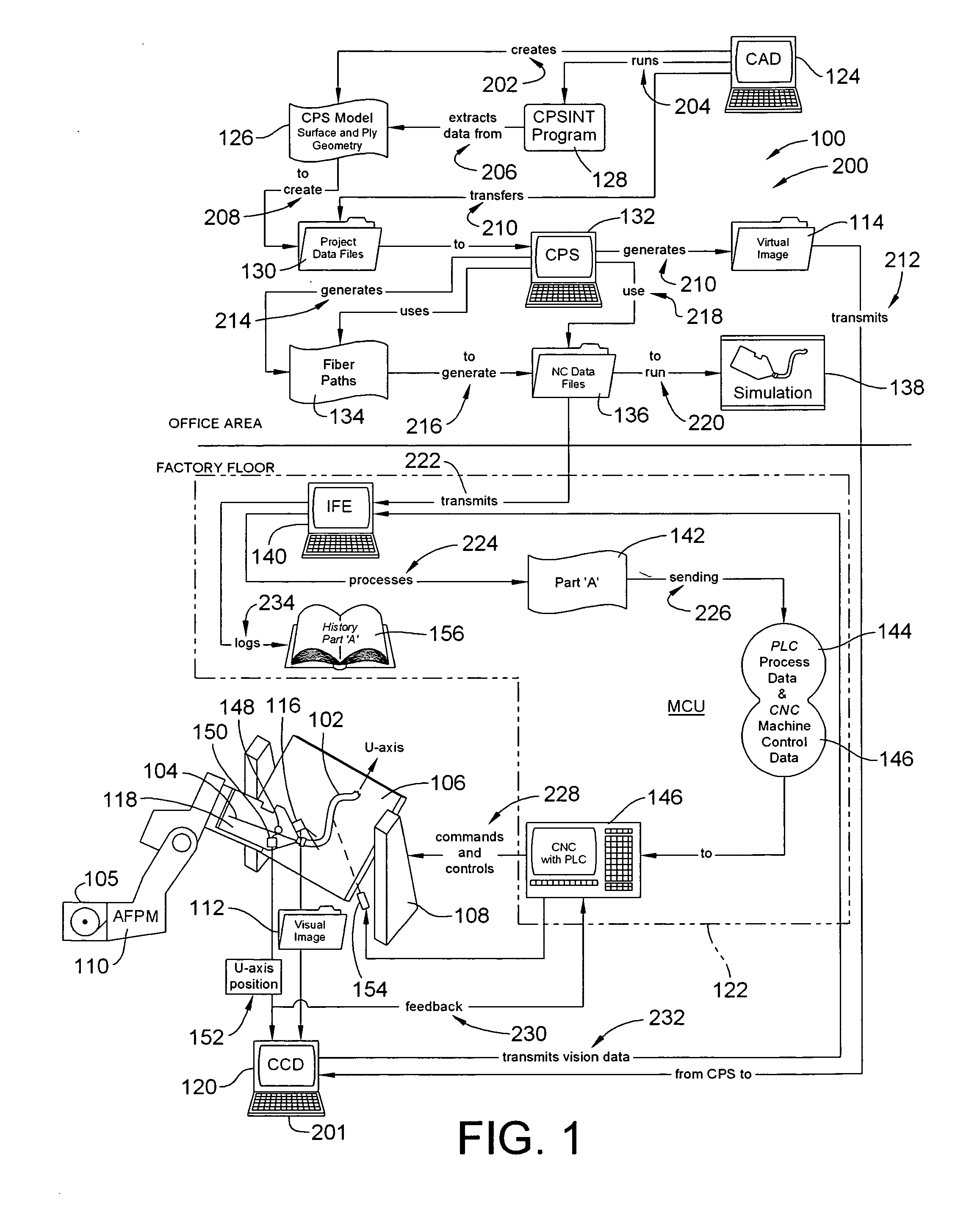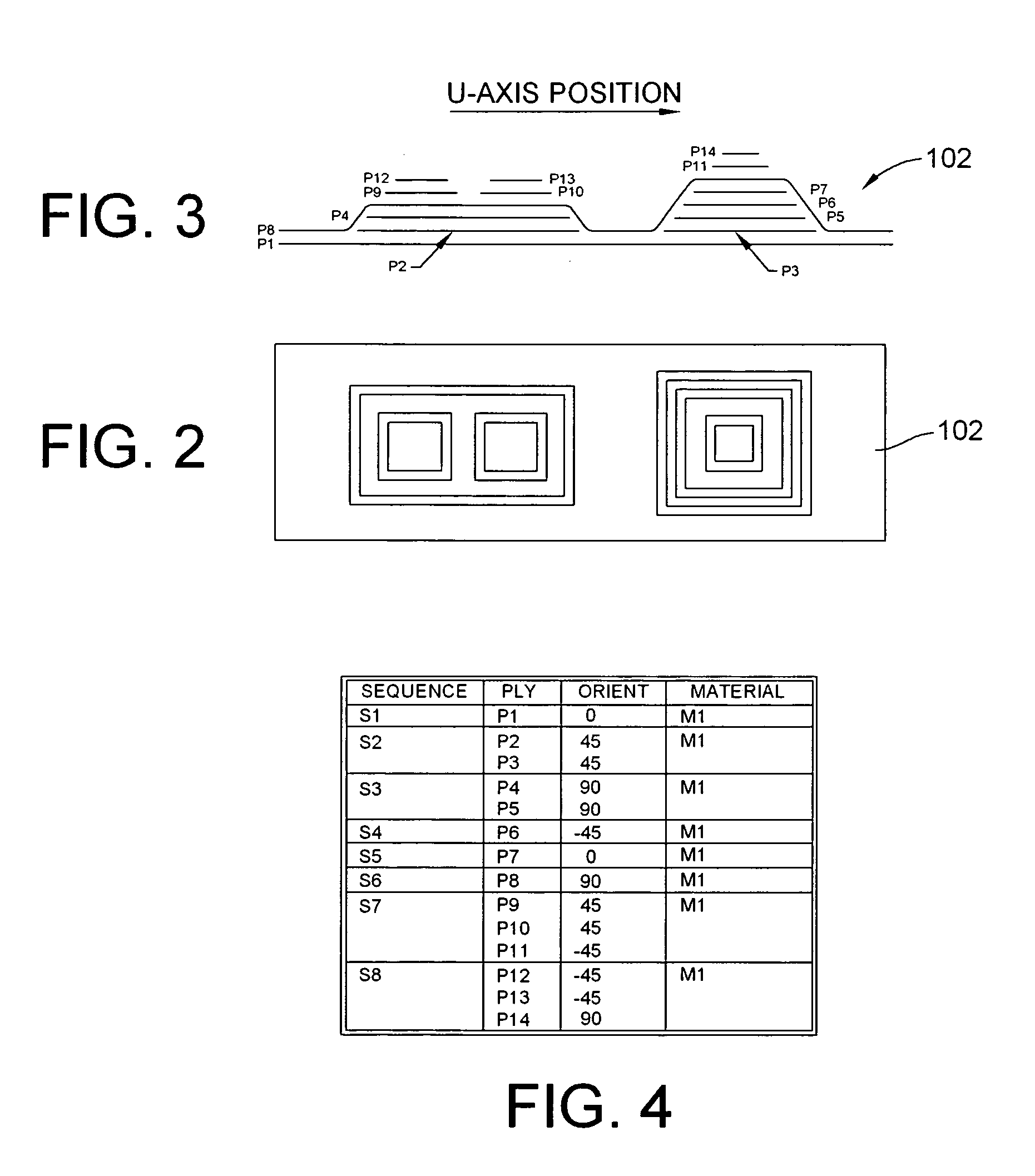Visual fiber placement inspection
a technology of visual inspection and automated fiber placement, which is applied in the direction of instruments, investigating composite materials, and material analysis, can solve the problems of high difficulty, high difficulty, and high difficulty involved, and achieve the effect of simple and elegant process, and eliminating the need for tedious computation
- Summary
- Abstract
- Description
- Claims
- Application Information
AI Technical Summary
Benefits of technology
Problems solved by technology
Method used
Image
Examples
Embodiment Construction
[0042]FIG. 1 is a combined schematic and flowchart illustrating a first exemplary embodiment of an apparatus 100 and a method (200) for inspecting a composite structure 102, formed from one or more composite tows 104, fed from a creel 105, and laid onto a tool surface 106 of a moveable tool 108 by an automated fiber placement machine (AFPM) 110, by comparing (201) a visual image 112 of at least a portion of the composite structure 102 to a virtual image 114 of the portion of the composite structure 102 captured in the visual image 112.
[0043]As will be described in more detail below, the virtual image 114 provides a theoretical rendering of the way that each tow in each layer of the composite structure should appear, in accordance with the design of the structure 102, to a vision capture element 116, which is operatively or physically mounted to a fiber placement head 118 of the AFPM 110, to view the fiber tows 104, as they are sequentially laid onto the tool surface 106 or on top of...
PUM
| Property | Measurement | Unit |
|---|---|---|
| Fraction | aaaaa | aaaaa |
| Fraction | aaaaa | aaaaa |
| Angle | aaaaa | aaaaa |
Abstract
Description
Claims
Application Information
 Login to View More
Login to View More - R&D
- Intellectual Property
- Life Sciences
- Materials
- Tech Scout
- Unparalleled Data Quality
- Higher Quality Content
- 60% Fewer Hallucinations
Browse by: Latest US Patents, China's latest patents, Technical Efficacy Thesaurus, Application Domain, Technology Topic, Popular Technical Reports.
© 2025 PatSnap. All rights reserved.Legal|Privacy policy|Modern Slavery Act Transparency Statement|Sitemap|About US| Contact US: help@patsnap.com



